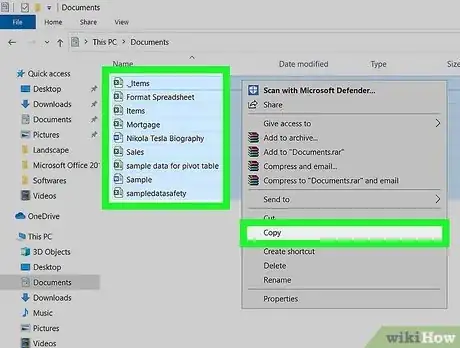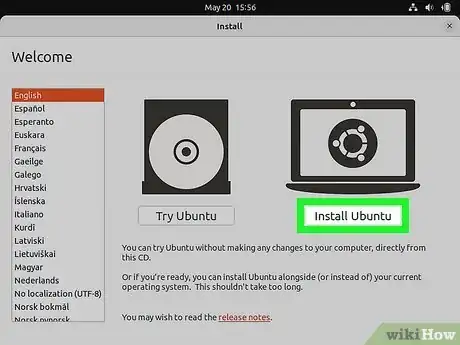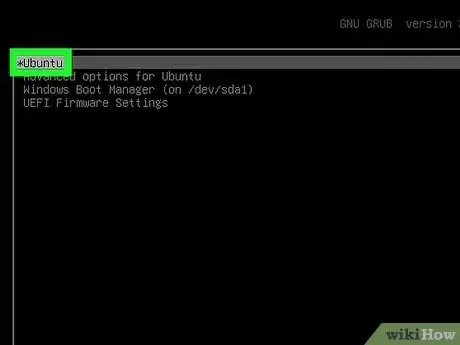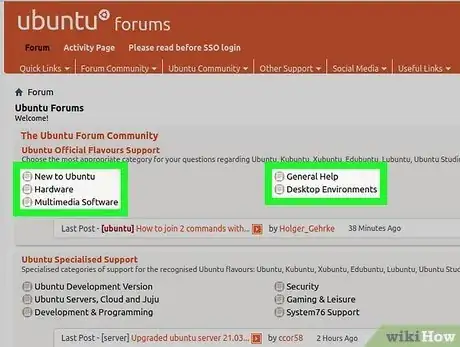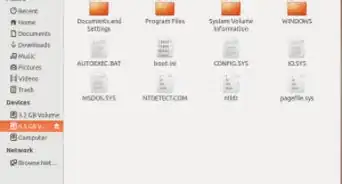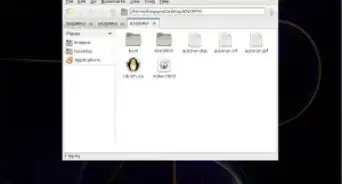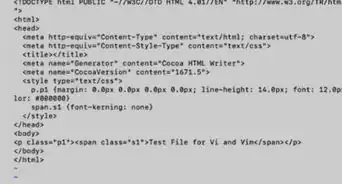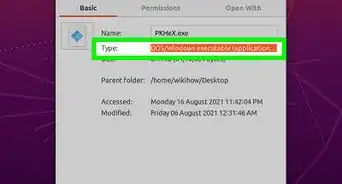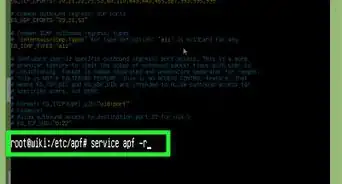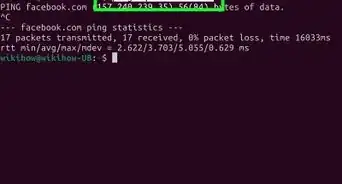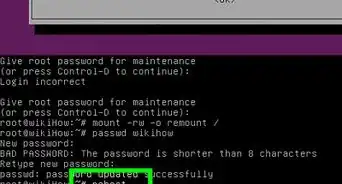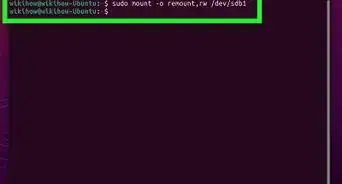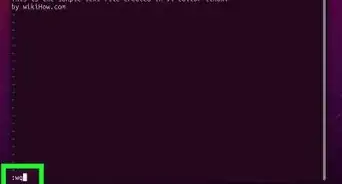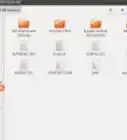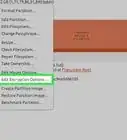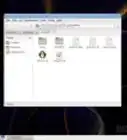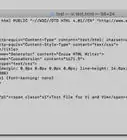X
wikiHow is a “wiki,” similar to Wikipedia, which means that many of our articles are co-written by multiple authors. To create this article, 34 people, some anonymous, worked to edit and improve it over time.
This article has been viewed 325,784 times.
Learn more...
A suggestive guide on how to move from Windows to Linux. Get a taste of Linux without disrupting your Windows installation.
Steps
-
1Choose a Linux Distribution. Research is key. Look into what distribution of GNU/Linux would be best for you. Everyone is different, and all Linux distributions are different, but there will probably be one (or two) that appeals to the most. If you're new to the operating system, it's probably best to go for something like Ubuntu, Debian, Fedora, OpenSuse, Mandriva, PCLinuxOS or Linux Mint -- these distributions of Linux are aimed at inexperienced users and will help you along the way. The Ubuntu distribution will no longer send you a CD free of charge, but there are sites on the internet which charge a small fee for postage. The quickest, and probably cheapest way to get Linux is to download an .iso image from the distribution website and burn it to a cd or make a bootable flash drive using a tool like Pendrivelinux. Ubuntu is currently the most popular distribution for users new to Linux and has active support forums.
-
2Try the "Live CD" versions first, assuming your computer will boot from the CD drive; most will. Most distributions offer Live CD ISOs on their website, which you can burn to CD. A Live CD means that Linux will run entirely from a CD and will not touch your Windows installation - this allows you to test out some of the functionality Linux offers without wiping your existing Windows install. If your computer will not boot to a Live CD on the first attempt, try looking at the Boot Order in your computer's BIOS, and setting CD-ROM to a higher priority than your Master Drive.Advertisement
-
3Use Linux applications that have been ported over to Windows or cross platform applications. Good examples are Firefox, Audacity, VLC, Inkscape and the GIMP. Using these will get you used to the kind of applications available on Linux. Using open source applications will be a real boost when you actually switch over, as it will be relatively painless for, say, an XChat user to use XChat on his new system, rather than a mIRC (Or other Windows-only IRC client) user having to learn an entirely new program.
-
4Back up your important data before you do anything else. If you make a mistake while installing Linux, it's possible you'll have to format your hard drive to put things right. In which case, you will lose all data on it. It is very important you back up if you need to.
-
5Get hold of a Linux install CD - when you boot from this, it will take you through the steps required to install Linux. Some distributions, like Ubuntu, actually install from the Live CD, so you do not need to download an additional CD image.
-
6Choose which operating system to boot into when once the Linux installation has finished. This is called dual-booting. It is wise to do this before completely converting to Linux to give you something to fall back on if something goes wrong.
-
7Get comfortable with Linux. As time goes on you will find you need to boot into Windows less and less. Using Linux is a learning experience, make sure you make the most of the "community" help which is available from most distributions of Linux. There is usually a wide community which you can ask questions and there will be people more than willing to help you out with any problems you've got. Make sure you use Google and the "search" functions on community websites because people may get irate at answering the same questions all the time in forums and on irc. Visit your distribution's support page or FAQ.
-
8Wipe your Windows partition (devote your entire hard disk to Linux) once you're comfortable with Linux. You'll probably never look back!
Advertisement
Community Q&A
-
QuestionAre the formatting of files like .doc and .xls that I use for Windows Office such that I can save them on an ubuntu formatted drive?
 Community AnswerYes, you can save them with no problems on an ubuntu formatted drive, just like any other file. In ubuntu you can open these files with LibreOffice, which operated mostly like the equivalent Windows applications.
Community AnswerYes, you can save them with no problems on an ubuntu formatted drive, just like any other file. In ubuntu you can open these files with LibreOffice, which operated mostly like the equivalent Windows applications. -
QuestionHow do I move temporarily back to Windows from Linux?
 Community AnswerIf you install Linux and Windows side-by-side as the article explains, then you can just choose during booting which operating system you want to start.
Community AnswerIf you install Linux and Windows side-by-side as the article explains, then you can just choose during booting which operating system you want to start. -
QuestionI have been using Windows since the 1980's, but do not need it anymore. I would like to convert to Linux, but I don't want to lose all the files I have on the hard drive.
 Community AnswerYou can have Linux and Windows on the same computer, or you could save the files you want to keep onto external storage, or you could just have multiple computers.
Community AnswerYou can have Linux and Windows on the same computer, or you could save the files you want to keep onto external storage, or you could just have multiple computers.
Advertisement
Warnings
- The Linux world is (generally) more friendly to newcomers than users of other systems, and newcomers are generally welcomed and encouraged on the forums of the various 'distros'. BUT before asking a question make sure that it hasn't been asked 1,000 times before - they all have a search facility and not using it is a guaranteed way to get peoples' backs up!⧼thumbs_response⧽
- Play with Linux, the more you use it, the more you will understand it. Don't try to run all your windows programs in Linux via wine, most of then have equivalent programs in Linux. Changing is always hard, even when switching apps in windows you would miss your old apps and features, it's normal. Different apps work in different ways, it's all a matter of taste which is better.⧼thumbs_response⧽
- Use your distro!! Many people will try to use Linux as they use Windows, downloading programs from random sites and trying to install them. Don't do that unless you have someone helping you. Most of the time, your distro already has the program you want, use the distro package manager to install it. If it isn't there, search on the web for that program and your distro's version. Never download and install a program built for other distros, most of the time it will not work or at very least will confuse you and hurt the distro in the long run. Installing from the source ( *src* packages) isn't hard, but you probably don't have yet enough knowledge to do that yet. Don't even try if you don't have a how to or some help.⧼thumbs_response⧽
- Be sure to know what video chip you are using. All video chips should be supported for text-mode, and most are supported in X Windows for their resolution capabilities. However, many are not supported for 2D and 3D hardware acceleration. There are instructions on loading both ATI and nVidia hardware acceleration drivers for most Linux distributions in several places on the Internet.⧼thumbs_response⧽
- Let Linux do the work, for the most part, it will find and load the drivers needed for all your devices, and it will even mount your Windows partition.⧼thumbs_response⧽
- Choose your distribution carefully. Ubuntu may be a good start for Windows users, whereas distributions such as Gentoo or Slackware require an intimate knowledge and comfort level with Linux.⧼thumbs_response⧽
- Because of legal restrictions many versions of Linux don't carry additional software (known as 'codecs') to allow media players to play (for example) commercial DVDs. Get to know where/how you can get hold of these codecs and use your Linux version's package manager to install them.⧼thumbs_response⧽
- Only install to an external hard drive if you are 100% sure that your BIOS will let you. If not, you may be unable to boot Windows or Linux and you will be stuck using the live CD if you have one.⧼thumbs_response⧽
Advertisement
About This Article
Advertisement



